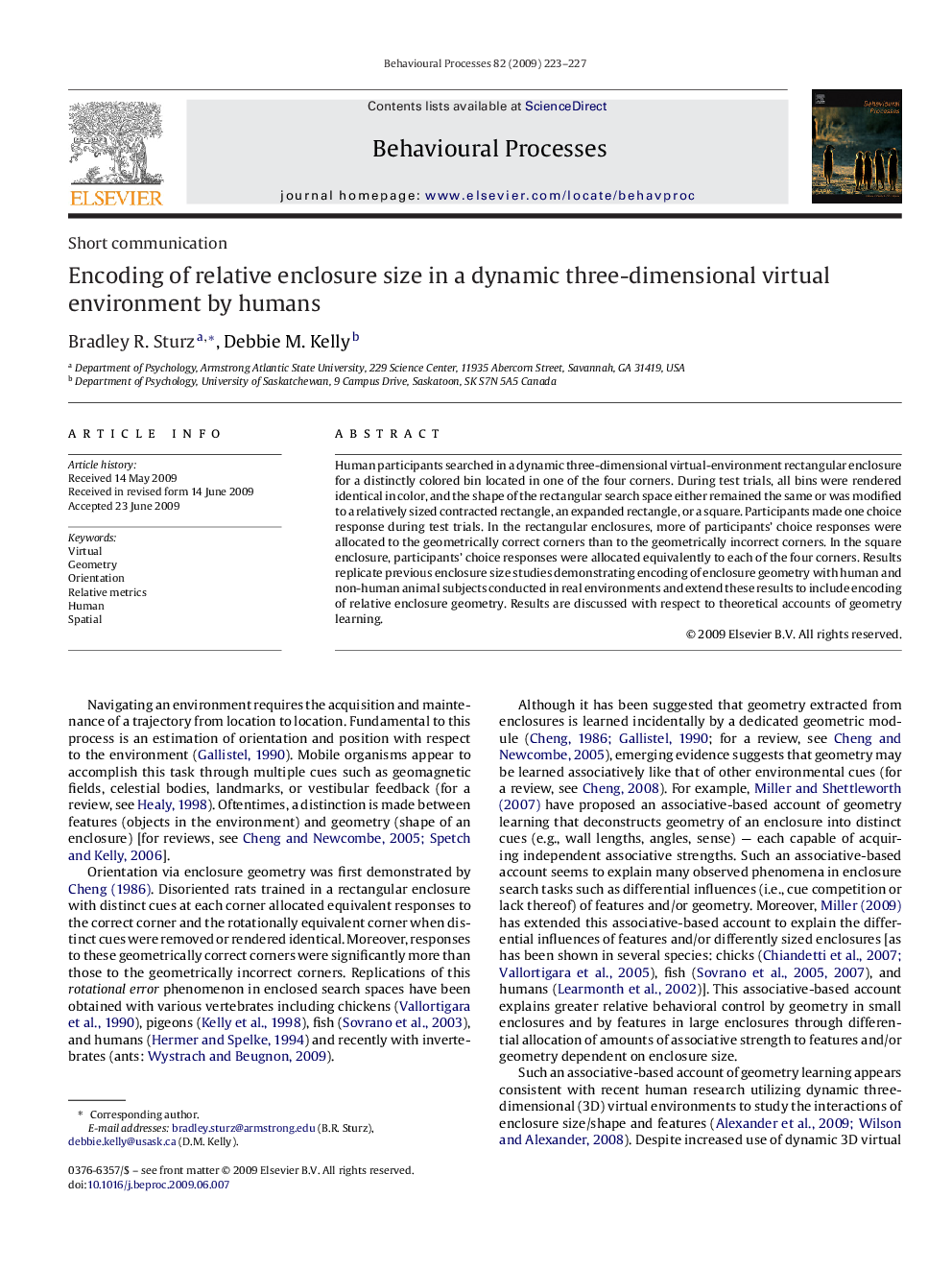| Article ID | Journal | Published Year | Pages | File Type |
|---|---|---|---|---|
| 2427535 | Behavioural Processes | 2009 | 5 Pages |
Human participants searched in a dynamic three-dimensional virtual-environment rectangular enclosure for a distinctly colored bin located in one of the four corners. During test trials, all bins were rendered identical in color, and the shape of the rectangular search space either remained the same or was modified to a relatively sized contracted rectangle, an expanded rectangle, or a square. Participants made one choice response during test trials. In the rectangular enclosures, more of participants’ choice responses were allocated to the geometrically correct corners than to the geometrically incorrect corners. In the square enclosure, participants’ choice responses were allocated equivalently to each of the four corners. Results replicate previous enclosure size studies demonstrating encoding of enclosure geometry with human and non-human animal subjects conducted in real environments and extend these results to include encoding of relative enclosure geometry. Results are discussed with respect to theoretical accounts of geometry learning.
